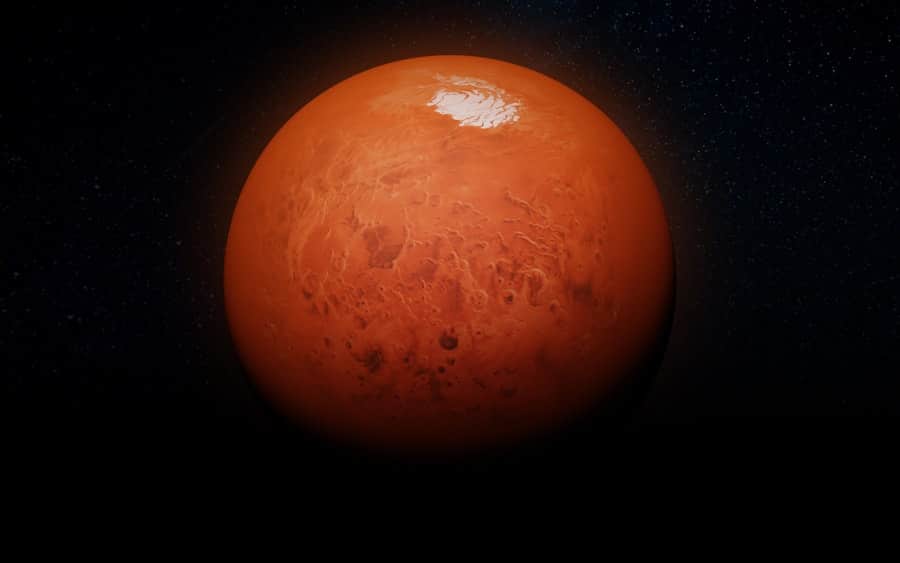China’s Space Ambitions: Landmark Mars Mission Heralds New Era for Country

China’s space program has made significant strides in recent years, solidifying its position as a major player in the global space exploration arena. With a series of successful missions and groundbreaking achievements, China has demonstrated its capabilities and ambitions in space. These achievements not only contribute to scientific knowledge and technological advancements but also have broader implications for China’s economy and global standing.
Breaking News: China Successfully Lands Rover on Mars
In a historic feat, China successfully landed its rover on Mars as part of the Tianwen-1 mission. This mission, which was launched in July 2020, marked China’s first attempt at landing on the red planet. The rover, named Zhurong, touched down in the Utopia Planitia region of Mars, a vast plain that is believed to have once been an ancient lakebed.
The successful landing of Zhurong on Mars is a significant milestone for China’s space program. It demonstrates China’s technological prowess and its ability to undertake complex missions in deep space. The mission also puts China in an elite group of countries that have successfully landed rovers on Mars, including the United States and the former Soviet Union.
China’s Space Ambitions: A Brief History
China’s space program traces its roots back to the 1950s when it began developing rockets and satellites. Over the years, China has achieved several milestones in space exploration. In 1970, it became the fifth country to launch its own satellite into orbit. In 2003, China sent its first astronaut into space, becoming only the third country to achieve manned spaceflight.
China has also made significant progress in lunar exploration. In 2013, it successfully landed a rover on the moon as part of the Chang’e-3 mission. This made China only the third country to achieve a soft landing on the lunar surface after the United States and the former Soviet Union.
Breaking News: China’s Mars Mission Sends Back Stunning Images
China’s Mars rover, Zhurong, has sent back stunning images of the Martian surface. The images show the rocky terrain of Mars, providing valuable insights into the planet’s geology and potential for past or present signs of life. The rover has also captured images of its own landing site, showcasing the successful touchdown and the surrounding landscape.
These images have significant scientific value as they contribute to our understanding of Mars and its potential for supporting life. They also serve as a testament to China’s technological capabilities in capturing and transmitting high-quality images from a distant planet.
The Importance of China’s Mars Mission for its Space Program
China’s Mars mission is a crucial component of its broader space ambitions. It represents a major step forward in China’s goal of becoming a leading space-faring nation. The successful landing on Mars demonstrates China’s ability to undertake complex missions in deep space and positions it as a key player in future planetary exploration.
The Mars mission also has potential benefits for China’s economy and technological development. It provides opportunities for innovation and technological advancements that can be applied to various industries, including aerospace, telecommunications, and robotics. Additionally, the mission enhances China’s global standing in space exploration, showcasing its capabilities and contributing to its soft power.
Breaking News: China Plans to Build its Own Space Station by 2022
China has announced plans to build its own space station by 2022. This ambitious project aims to establish a permanent presence in space and conduct scientific research in microgravity environments. The space station, named Tiangong, will consist of multiple modules that will be launched and assembled in orbit.
The construction of a space station is a significant milestone for China’s space program. It demonstrates China’s ability to undertake complex projects in space and highlights its commitment to long-term space exploration and research. The space station will also provide opportunities for international cooperation, with China inviting other countries to participate in experiments and missions.
The Role of China’s Space Program in Geopolitics
China’s space program is viewed by other countries through the lens of geopolitics. Some countries see China’s advancements in space as a challenge to their own dominance in the field. There are concerns about China’s military applications of space technology and its potential for weaponization.
However, there are also opportunities for cooperation and collaboration in space exploration. China has expressed its willingness to work with other countries on joint missions and scientific research. This could lead to increased international cooperation and the sharing of resources, knowledge, and expertise.
Breaking News: China Launches its Longest Manned Space Mission
China has launched its longest manned space mission to date, the Shenzhou-12 mission. The mission aims to further test China’s capabilities in manned spaceflight and prepare for future missions, including the construction of the Tiangong space station. The crew will spend three months in orbit, conducting experiments and testing technologies.
The Shenzhou-12 mission is a significant achievement for China’s space program. It demonstrates China’s ability to sustain long-duration manned missions and lays the groundwork for future endeavors, such as lunar exploration and deep space missions. It also highlights China’s commitment to human spaceflight and its ambitions to become a major player in manned space exploration.
China’s Space Industry: Challenges and Opportunities
China’s space industry faces several challenges as it continues to expand and develop. One of the main challenges is the need for technological advancements and innovation to keep up with other space-faring nations. China must invest in research and development to stay competitive in areas such as rocket technology, satellite systems, and deep space exploration.
However, there are also significant opportunities for growth and development in the industry. China has a large pool of talented scientists, engineers, and technicians who can contribute to the advancement of space technology. The government’s support for the space program and its commitment to investment in the industry provide a favorable environment for growth and innovation.
Breaking News: China’s Lunar Mission Collects Samples from the Moon
China’s Chang’e-5 mission successfully collected samples from the moon and returned them to Earth. This mission, which was launched in 2020, marked China’s first attempt at collecting lunar samples. The samples provide valuable insights into the moon’s geology and history, contributing to our understanding of the solar system’s formation and evolution.
The successful collection of lunar samples is a significant achievement for China’s space program. It demonstrates China’s ability to undertake complex missions in deep space and positions it as a key player in lunar exploration. The mission also opens up possibilities for future lunar missions, including manned missions and the establishment of a lunar base.
What’s Next for China’s Space Ambitions?
Looking ahead, China has ambitious plans for space exploration. It aims to send astronauts to the moon, establish a lunar base, and conduct manned missions to Mars. China also plans to launch more satellites for communication, navigation, and Earth observation purposes.
China is also open to collaboration with other countries in space exploration. It has expressed its willingness to work with international partners on joint missions and scientific research. This could lead to increased cooperation and the sharing of resources, knowledge, and expertise.
China’s recent achievements in space exploration have solidified its position as a major player in the global arena. With successful missions to Mars, the moon, and beyond, China has demonstrated its technological capabilities and ambitions in space. These achievements not only contribute to scientific knowledge and technological advancements but also have broader implications for China’s economy, technology development, and global standing. As China continues to push the boundaries of space exploration, it will shape the future of humanity’s presence in space and contribute to our understanding of the universe.
If you’re interested in China’s space ambitions and want to delve deeper into the topic, you might find this article on The Truth Behind TV intriguing. Titled “Explained or Unexplained: Inside Minnesota’s Recent UFO Sightings,” it explores the mysterious sightings of unidentified flying objects in Minnesota. This thought-provoking piece examines the possibility of extraterrestrial encounters and offers a fascinating perspective on the unexplained phenomena. Check it out here to expand your knowledge on the subject.
Leave A Reply
You must be logged in to post a comment.










 Paranormal
Paranormal

